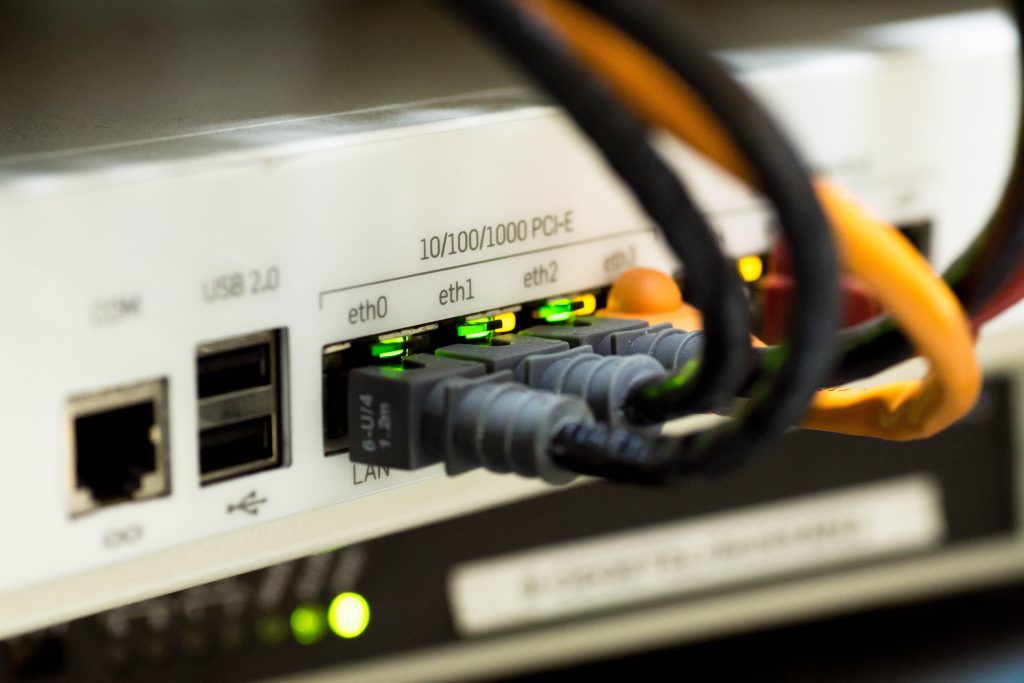CompTIA Network +

CompTIA Network +
CompTIA Network +
CompTIA Network+ validates the technical skills needed to securely establish, maintain and troubleshoot the essential networks that businesses rely on.
£3,100.00
Out of stock
Is this course right for me?
Unlike other vendor-specific networking certifications, ComptTIA Network+ prepares candidates to support networks on any platform. compTIA Network+ is the only certification that covers the specific skills that network professionals need. Other certifications are so broad, the don’t cover the hands-on skills and precise knowledge needed in today’s networking environments
After completing this course you should be able to:
- Deploy and troubleshoot Ethernet networks.
- Support IPv4 and IPv6 networks.
- Configure and troubleshooting routers.
- Support network services and applications.
- Ensure network security and availability.
- Deploy and troubleshooting wireless networks.
- Support WAN links and remote access methods.
- Support organizational procedures and site security controls.
- Summarize cloud and datacentre architecture.
This course is delivered virtually.
Any questions?
If you have any questions about this course, please do not hesitate to contact our Central team, during working hours, on 01437 753 320 or anytime via email central@pembrokeshire.ac.uk
- No formal entry requirements
Comparing OSI Model Network Functions
- Compare and Contrast OSI Model Layers
- Configure SOHO Networks
Deploying Ethernet Cabling
- Summarize Ethernet Standards
- Summarize Copper Cabling Types
- Summarize Fiber Optic Cabling Types
- Deploy Ethernet Cabling
Deploying Ethernet Switching
- Deploy Networking Devices
- Explain Network Interfaces
- Deploy Common Ethernet Switching Features
Troubleshooting Ethernet Networks
- Explain Network Troubleshooting Methodology
- Troubleshoot Common Cable Connectivity Issues
Explaining IPv4 Addressing
- Explain IPv4 Addressing Schemes
- Explain IPv4 Forwarding
- Configure IP Networks and Subnets
Supporting IPv4 and IPv6 Networks
- Use Appropriate Tools to Test IP Configuration
- Troubleshoot IP Networks
- Explain IPv6 Addressing Schemes
Configuring and Troubleshooting Routers
- Compare and Contrast Routing Concepts
- Compare and Contrast Dynamic Routing Concepts
- Install and Troubleshoot Routers
Explaining Network Topologies and Types
- Explain Network Types and Characteristics
- Explain Tiered Switching Architecture
- Explain Virtual LANs
Explaining Transport Layer Protocols
- Compare and Contrast Transport Protocols
- Use Appropriate Tools to Scan Network Ports
Explaining Network Services
- Explain the Use of Network Addressing Services
- Explain the Use of Name Resolution Services
- Configure DNS Services
Explaining Network Applications
- Explain the Use of Web, File/Print, and Database Services
- Explain the Use of Email and Voice Services
Ensuring Network Availability
- Explain the Use of Network Management Services
- Use Event Management to Ensure Network Availability
- Use Performance Metrics to Ensure Network Availability
Explaining Common Security Concepts
- Explain Common Security Concept
- Explain Authentication Methods
Supporting and Troubleshooting Secure Networks
- Compare and Contrast Security Appliances
-
- Troubleshoot Service and Security Issues
Deploying and Troubleshooting Wireless Networks
- Summarize Wireless Standards
- Install Wireless Networks
- Troubleshoot Wireless Networks
- Configure and Troubleshoot Wireless Security
Comparing WAN Links and Remote Access Methods
- Explain WAN Provider Links
- Compare and Contrast Remote Access Methods
Explaining Organizational and Physical Security Concepts
- Explain Organizational Documentation and Policies
- Explain Physical Security Methods
- Compare and Contrast Internet of Things Devices
Explaining Disaster Recovery and High Availability Concepts
- Explain Disaster Recovery Concepts
- Explain High Availability Concepts
Applying Network Hardening Techniques
- Compare and Contrast Types of Attacks
- Apply Network Hardening Techniques
Summarizing Cloud and Datacenter Architecture
- Summarize Cloud Concepts
- Explain Virtualization and Storage Area Network Technologies
- Explain Datacenter Network Architecture
Labs:
- Exploring the Lab Environment
- Configure a SOHO RouterCapture Network Traffic
- Configure Interface Settings
- Configure IPv4 Static Addressing
- Analyse ARP Traffic
- Use Tools to Test IP Configuration
- Configure IPv6 Static Addressing
- Configure Static Routing
- Configure Dynamic Routing
- Troubleshoot IP Networks (Parts A and B)
- Use Network Scanners
- Analyse a DHCP Server Configuration
- Analyse a DNS Server Configuration
- Analyse Application Security Configurations
- Configure Secure Access Channels
- Configure Syslog
- Analyse Network Performance
- Verify Service and Application Configuration
- Configure a NAT Firewall
- Configure Remote Access
- Develop Network Documentation
- Backup and Restore Network Device Configuration
- Analyse an On-path Attack
- Configure Port Security
- Troubleshoot Service and Security Issues
Learners have the option to complete course assessment/assignments or elements of the course through the medium of Welsh or bilingually. Visit our Welsh Language in the College page to find out what else is available to you.
- Written examination
- It would be beneficial, but not essential, to bring your own device/laptop to support your studies
Any costs above are approximate and may change. For information on refunds and course cancellations please see the fee policy.
- No additional costs
- Personal Learning Account (PLA) funding may be available for this course (subject to eligibility). Click here for more information or contact central@pembrokeshire.ac.uk
What are the entry requirements?
- No formal entry requirements
What will I learn?
Comparing OSI Model Network Functions
- Compare and Contrast OSI Model Layers
- Configure SOHO Networks
Deploying Ethernet Cabling
- Summarize Ethernet Standards
- Summarize Copper Cabling Types
- Summarize Fiber Optic Cabling Types
- Deploy Ethernet Cabling
Deploying Ethernet Switching
- Deploy Networking Devices
- Explain Network Interfaces
- Deploy Common Ethernet Switching Features
Troubleshooting Ethernet Networks
- Explain Network Troubleshooting Methodology
- Troubleshoot Common Cable Connectivity Issues
Explaining IPv4 Addressing
- Explain IPv4 Addressing Schemes
- Explain IPv4 Forwarding
- Configure IP Networks and Subnets
Supporting IPv4 and IPv6 Networks
- Use Appropriate Tools to Test IP Configuration
- Troubleshoot IP Networks
- Explain IPv6 Addressing Schemes
Configuring and Troubleshooting Routers
- Compare and Contrast Routing Concepts
- Compare and Contrast Dynamic Routing Concepts
- Install and Troubleshoot Routers
Explaining Network Topologies and Types
- Explain Network Types and Characteristics
- Explain Tiered Switching Architecture
- Explain Virtual LANs
Explaining Transport Layer Protocols
- Compare and Contrast Transport Protocols
- Use Appropriate Tools to Scan Network Ports
Explaining Network Services
- Explain the Use of Network Addressing Services
- Explain the Use of Name Resolution Services
- Configure DNS Services
Explaining Network Applications
- Explain the Use of Web, File/Print, and Database Services
- Explain the Use of Email and Voice Services
Ensuring Network Availability
- Explain the Use of Network Management Services
- Use Event Management to Ensure Network Availability
- Use Performance Metrics to Ensure Network Availability
Explaining Common Security Concepts
- Explain Common Security Concept
- Explain Authentication Methods
Supporting and Troubleshooting Secure Networks
- Compare and Contrast Security Appliances
-
- Troubleshoot Service and Security Issues
Deploying and Troubleshooting Wireless Networks
- Summarize Wireless Standards
- Install Wireless Networks
- Troubleshoot Wireless Networks
- Configure and Troubleshoot Wireless Security
Comparing WAN Links and Remote Access Methods
- Explain WAN Provider Links
- Compare and Contrast Remote Access Methods
Explaining Organizational and Physical Security Concepts
- Explain Organizational Documentation and Policies
- Explain Physical Security Methods
- Compare and Contrast Internet of Things Devices
Explaining Disaster Recovery and High Availability Concepts
- Explain Disaster Recovery Concepts
- Explain High Availability Concepts
Applying Network Hardening Techniques
- Compare and Contrast Types of Attacks
- Apply Network Hardening Techniques
Summarizing Cloud and Datacenter Architecture
- Summarize Cloud Concepts
- Explain Virtualization and Storage Area Network Technologies
- Explain Datacenter Network Architecture
Labs:
- Exploring the Lab Environment
- Configure a SOHO RouterCapture Network Traffic
- Configure Interface Settings
- Configure IPv4 Static Addressing
- Analyse ARP Traffic
- Use Tools to Test IP Configuration
- Configure IPv6 Static Addressing
- Configure Static Routing
- Configure Dynamic Routing
- Troubleshoot IP Networks (Parts A and B)
- Use Network Scanners
- Analyse a DHCP Server Configuration
- Analyse a DNS Server Configuration
- Analyse Application Security Configurations
- Configure Secure Access Channels
- Configure Syslog
- Analyse Network Performance
- Verify Service and Application Configuration
- Configure a NAT Firewall
- Configure Remote Access
- Develop Network Documentation
- Backup and Restore Network Device Configuration
- Analyse an On-path Attack
- Configure Port Security
- Troubleshoot Service and Security Issues
Can I do this course in Welsh?
Learners have the option to complete course assessment/assignments or elements of the course through the medium of Welsh or bilingually. Visit our Welsh Language in the College page to find out what else is available to you.
How will I be assessed?
- Written examination
What can I do next?
Do I need to bring/buy any equipment?
- It would be beneficial, but not essential, to bring your own device/laptop to support your studies
Are there any additional costs?
- No additional costs
- Personal Learning Account (PLA) funding may be available for this course (subject to eligibility). Click here for more information or contact central@pembrokeshire.ac.uk
Additional Information
Additional information
| Level: | |
|---|---|
| Mode: |



